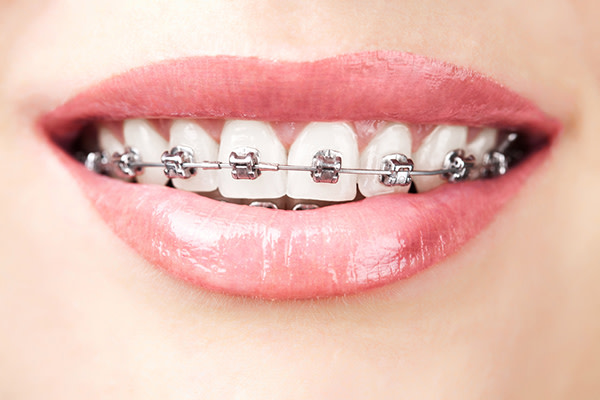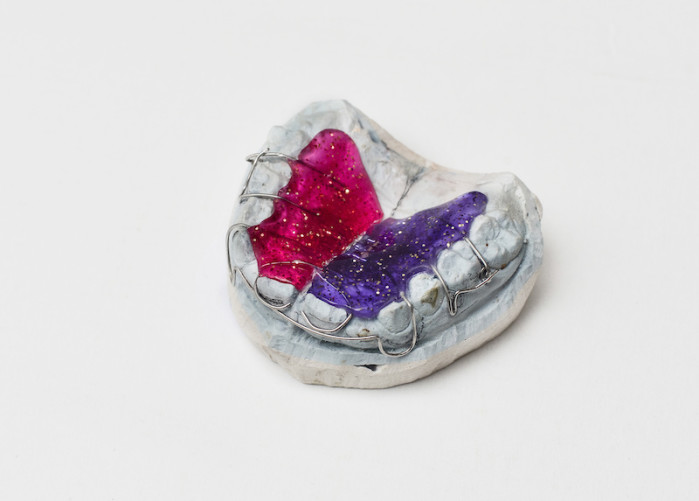Different types of Braces
A Comparison: Fixed braces, removable braces, or clear aligner?![[CRO] Women - Brunette - Left Perfil - Aligner - Smile - Orange - Gradient - Background - Desktop](/static/d9766426b882838d6cc545e26cf7cd9d/d9a56/2024-05-21-DR-SMILE-EVOLUTION_05_Beauty_Amanda_3184_riccardo_retouched__1_.jpg)
A gap between your teeth is quirky. A crooked tooth is hardly noticeable. This is what people often say when you tell them you are having your teeth straightened. That may well be, but if you do not feel comfortable about your smile and actually prefer to smile with your hand clamped over your mouth, dental correction can work wonders. Braces are one way of correcting your teeth. We show you the various options and the best alternatives for adults.
Different types of braces to correct your teeth
There are two different types of braces: removable and fixed. Which is the best option to correct your teeth depends on how severely misaligned they are. Removable and fixed braces exert different levels of pressure to move the teeth.
Braces fixed to the outside of the teeth

Brackets, wire and colored elastic bands are a common sight. Almost everyone at school had these. With fixed braces, brackets (small metal or ceramic plates) are attached to the teeth and connected with a wire, which stretches over the teeth. The wire is used as a guide for the dental arch and exerts continuous pressure to help move teeth into the right position. So as not to exert too much pressure, treatments are carried out in small steps over the course of many years. Fixed braces are often the only way to correct the teeth if the misalignment is very severe and complex.
Braces fixed to the inside of the teeth
With fixed braces, lingual brackets (lingual = next to the tongue) are adhered to the inside of the teeth. This is a completely invisible fixed brace option to correct misaligned teeth. The aesthetics of this type of fixed brace makes it an especially popular option in adults.
Removable braces

Removable braces are usually used for minor malocclusions for basic corrections such as reshaping the jaw or creating space. Especially in young people, a removable brace can still steer the growth of the jaw and prevent more severe misalignment. Removable braces bring the jaw and teeth into the right position with curved wires. It is made of a plastic plate to which screws and wires are attached. The plate sits snug against the inside of the teeth and can then move the teeth to the ideal position. Removable braces are not suitable for fine tooth correction, which is why they are not taken into further consideration.
Transparent dental trays - aka aligners
Clear aligners have revolutionized the world of dental braces. Especially in adults, the almost invisible plastic aligners are an aesthetic alternative to visible braces. For an aligner therapy, the patient is given several fully customized transparent aligners. The aligners exert slight pressure on the teeth, thereby gradually moving them into the right position. Several aligners are required for successful treatment; the patient wears each for 10-14 days.

Braces for adults
It is a misconception that braces are only for children and adolescents. Many patients in their 30s, 40s and even 50s would like to straighten their teeth for aesthetic reasons and are prepared to wear a brace. Anyone who didn’t have a brace as an adolescent didn’t need one from a medical point of view. Many dental misalignments in children are not corrected as the health insurance does not cover the costs of aesthetic correction either in adults or in children (aside from a few exceptions, such as after an accident). Accordingly, there are many adults who have misaligned teeth and who would like to have their teeth corrected. But which type of brace is best for adults? We have listed some important considerations when choosing the best treatment.
Visibility
The most important argument for or against braces in adults is visibility. Especially in professional life, most people cannot imagine wearing fixed braces with brackets. The least visible option is a fixed brace with lingual brackets and aligners. Braces fixed to the inside of the teeth not visible at all; but transparent plastic aligners are also almost invisible.
Treatment time
Another point is the treatment time. While it can take 2-3 years to straighten teeth with fixed braces attached either to the inside or outside of the teeth, slightly misaligned teeth can be easily corrected with aligners within just a few short months. How long it takes depends on the state of your teeth before treatment.
Easy to clean
Clear aligners have the upper hand when it comes to cleaning. All you need is a mild toothpaste and a soft toothbrush for daily cleaning. They are also simply rinsed with lukewarm or cold water between brushes. With fixed braces, on the other hand, cleaning is a more complex process, as food particles tend to stick in the brackets and have to be removed with a special toothbrush. But nobody really relishes the idea of having to brush their teeth meticulously in their lunch break so that there is no evidence of that donut they ate when they have their next meeting.
Everyday constraints
While it only takes a few minutes to clean the aligners, they always have to be taken out before you eat or have a sugary drink. Many people are worried about how an aligner will affect their speech. Because the teeth are covered, your tongue has to get used to its new position. This can mean that you lisp slightly. But that always sounds a lot worse to you than it does to others; most people will not even notice. Over time, your tongue will adjust to the new situation and the lisp will disappear. If you have an important appointment, you can always take out the aligners. Regular checkups with the dentist are another consideration when choosing a brace. A fixed brace has to be checked every 5-8 weeks. With a DrSmile aligner therapy you are sent all your aligners at once and the treatment is monitored by experts through an app. There is no need for regular check-ups and you manage everything quite easily online.
Pain
Your brace should not be painful. However, the pressure on your teeth when fixed braces are tightened can be a little stronger than with an aligner. With all braces, it takes a little time for the tongue to get used to the new sensation in the mouth. Especially when braces are fixed to the inside of the teeth, your tongue can become a little sore at first.
Costs
The costs for orthopedic treatments are generally quite high. Nonetheless, there are enormous differences here and you can save a lot of money with the right treatment. While, for instance, correction with DrSmile aligners costs between € 1790 and € 2990, fixed braces or aligners from other suppliers can easily set you back € 6000 to € 7000.
The health insurance does not always pay
Unfortunately, people with statutory health insurance have to cover the costs of treatment themselves. The list of services covered by statutory health insurances does not include tooth correction. The costs may, however, be covered in those with a private health insurance. Always check this before you embark on treatment.
A supplementary dental insurance may therefore be a viable option
If you have statutory insurance, a supplementary dental insurance may well be worth your while, as your health insurance will generally only cover orthodontic treatments if you have severe misalignment. When choosing a supplementary dental insurance, you should first check if treatment with braces is covered so that you do not arrange the insurance in vain. It is important to know if a supplementary dental insurance will only cover you if you do not already have a diagnosis of misalignment from a dentist, in which case there is no point retrospectively arranging a supplementary dental insurance, since it will no longer cover the costs.
Conclusion
Aligners are the most pleasant and aesthetic option for adults to correct misaligned teeth or gaps between the teeth. The transparent material makes them virtually invisible; they are easy to clean and there are only minimal constraints in day-to-day life. A suitability test will easily tell you if your tooth misalignment makes you a suitable candidate for aligner therapy. If the clear aligners are not enough, you also have the option of invisible fixed braces with lingual brackets.
DR SMILE partner practices near you
Book an appointment at a DR SMILE partner practice near you